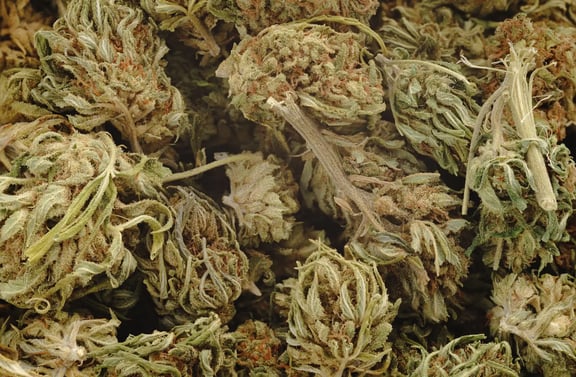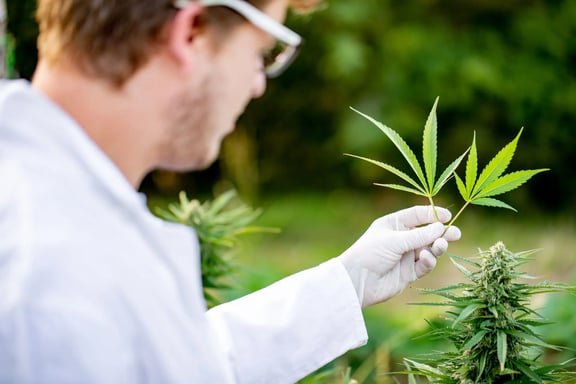For millennia, cannabis has been a plant of many talents, donned in the robes of ritual, medicine, and recreation. Its history in medicinal use dates back a staggering 12,000 years, revealing a tale interwoven with cultural practices and ancient remedies. Yet, the intrigue doesn’t stop there. Despite being hampered by legal constraints, modern research is slowly but surely unravelling the plant’s potential as a multifaceted treatment for a host of physical and mental ailments.
What’s causing quite the buzz lately is cannabis’s anti-inflammatory prowess. Emerging studies are giving credence to age-old claims, demonstrating that certain cannabis-derived supplements can significantly dial down inflammation. Whether you’re wrestling with acute or chronic inflammation, or some pesky auto-inflammatory malady, these supplements dive deep into your bodily tissues, providing a much-needed respite from enduring pain and discomfort.
Now, when it comes to cannabis, it’s not a one-size-fits-all affair. The Indica vs Sativa debate is a long-standing one in the cannabis community, and both sides have valid arguments for their preferred strain. Both contenders pack a similar compound profile, but don’t let that fool you. Their characteristics are as distinct as chalk and cheese. In the following pages, we’ll delve into the intricacies of these diverse weed strains to help you pinpoint the one that could very well be your anti-inflammatory knight in shining armour.

Understanding the difference between sativa and indica cannabis
Sativa and indica, the dual titans of the cannabis world, hail from the sun-drenched regions of South and Central Asia. For centuries, these plants have been more than just a pastime; they’ve been integral to medical, spiritual, and societal practices. Both Indica weed strains and Sativa weed strains come packed with a cocktail of cannabinoids—tetrahydrocannabinol (THC) and cannabidiol (CBD) being the headliners. Make no mistake, whether it’s a cerebral high or a body-melting relaxation you’re after, both have got you covered.
Yet, these cannabis siblings are anything but identical twins. Take a look, and you’ll find sativa plants stretching tall and thin, flaunting elongated leaves. Indica, by contrast, opts for a more compact physique, sporting short, bushy stems and broad leaves. But it’s not just skin-deep; the differences run into their very chemical makeup. You see, indica tends to be a CBD powerhouse, often outstripping its THC content. Sativa, the rebel, bucks the trend by tipping the scales in favour of THC.
These unique chemical profiles translate into distinct experiences. Sativa, for instance, is your go-to for a cerebral lift. It’s been touted for its ability to elevate mood, inject a dose of creativity, and even give you that extra spring in your step. Indica, conversely, is the strain you’d court for a full-body serenade. It’s particularly adept at easing you into a state of relaxation, encouraging sleep, and offering respite from pain.
But wait, there’s more to this tale. Both sativa and indica come adorned with a spectrum of terpenes—aromatic compounds found in plant essential oils. In the cannabis context, terpenes aren’t just for show; they have serious medicinal clout. They’re thought to create an ‘entourage effect’, synergising with other plant compounds to amplify their efficacy.
Ready for a rundown? Terpenes that are your allies in the fight against inflammation include:
Myrcene: A natural sedative and muscle relaxant
Limonene: Known for its mood-enhancing properties
Linalool: A powerful anti-inflammatory agent
Caryophyllene: A compound with both anti-inflammatory and analgesic effects
Alpha-pinene: Sharpens focus while reducing inflammation
Beta-pinene: Known for its antiseptic qualities
Eucalyptol: A breath of fresh air for your lungs and a balm for inflammation
Valencene: Renowned for its anti-inflammatory and insect-repellent properties
These terpenes manifest in varying concentrations across different strains and their derivative products, adding another layer of complexity to your cannabis choice.

How do sativa and indica compare for inflammation?
Navigating the labyrinthine world of cannabis research is no mean feat, primarily due to its precarious legal standing. While comprehensive studies are still in the nascent stage, we aren’t entirely in the dark. A smattering of academic research, peppered with a wealth of anecdotal accounts, suggests both sativa and indica can be formidable foes against inflammation.
Does sativa help with inflammation?
Long worshipped for its anti-inflammatory properties, Cannabis sativa owes its efficacy to a dynamic duo: cannabinoids and terpenes. These compounds engage in a tantalising tango with our endocannabinoid system (ECS), a sprawling web of chemical signals and receptors woven through our brain and body. The ECS is no lightweight; it holds sway over vital functions such as mood, memory, sleep, temperature regulation, and—you’ve guessed it—inflammation and immune response.
So how does this work, you ask? Well, some cannabinoids, notably THC, latch onto ECS receptors like a lock and key, activating pathways that can mitigate various inflammatory conditions. CBD plays a subtler game; it doesn’t bind directly but extends the lifespan of our naturally occurring endocannabinoids, giving the ECS more time to work its magic.
The research pot is still simmering, but early indications are promising. CBD alone and in concert with THC has shown potential in alleviating inflammation. Intriguingly, THC in isolation doesn’t seem to elevate anti-inflammatory cytokines; it needs its cannabinoid companions to truly shine.
Does indica help with inflammation?
Not to be outdone, indica also boasts a cocktail of cannabinoids and terpenes that synergise beautifully with the ECS. This strain is not just a one-trick pony; it has proven its mettle in reducing inflammation and has a storied reputation for pain relief to boot.
The secret sauce lies in the concoction of compounds in the plant. As long as your chosen supplement packs the right blend of terpenes and cannabinoids, you’re on the right track to dampening that pesky inflammation.

Navigating the UK Market: Cannabis Products for Inflammation Relief
While the UK has been historically stringent about cannabis—banning its recreational use as far back as 1928—the landscape is slowly changing. Medical cannabis has crossed the legal threshold, albeit with the caveat of being heavily regulated and reserved for rare prescriptions.
The Legal Lowdown: CBD, THC, and UK Laws
Nevertheless, Brits can now get their hands on a burgeoning array of legal cannabis-based products. By law, these offerings come with a low THC cap, ensuring you won’t be floating in psychoactive clouds. What they do boast is a hefty dose of CBD, along with a symphony of other cannabinoids and terpenes that carry potential health benefits.
Tailored Treatments: The Rise of Specialised Cannabis Products
One of the unsung advantages of these curated supplements is their targeted effectiveness. A growing number of reputable brands are formulating products to address specific woes—be it chronic pain, anxiety, sleepless nights, or stubborn inflammation. Opting for a product specially engineered for anti-inflammatory action can significantly increase your chances of relief.
When it comes to formats, the market has something for every palate and predicament. You’ve got options aplenty, ranging from capsules and tinctures to balms, creams, and even edibles. Your choice boils down to personal preference and the specific nature of your inflammation.
For instance, if you’re grappling with inflamed skin or joints, a topical cream could work wonders, delivering rapid relief right where you need it. On the other hand, if inflammation is playing havoc inside your body or is more widespread, oral solutions like capsules or tinctures might be your best bet.
The Buyer’s Guide: What to Look For
When you’re on the hunt for anti-inflammatory cannabis products, transparency is key. Keep an eye out for products with clearly labelled CBD and THC content. And don’t skimp on quality; opt for products sourced from organic cannabis or hemp. Given the pivotal role terpenes play in ramping up the anti-inflammatory arsenal of cannabis, ensure you choose a product crafted to preserve these aromatic game-changers.
Conclusion
The anti-inflammatory properties of cannabis have been known for thousands of years. Both indica and sativa strains have been shown to help reduce inflammation, making these powerful plants, and their derivatives, potential treatment options for people suffering from a range of chronic and acute conditions.












.jpg)